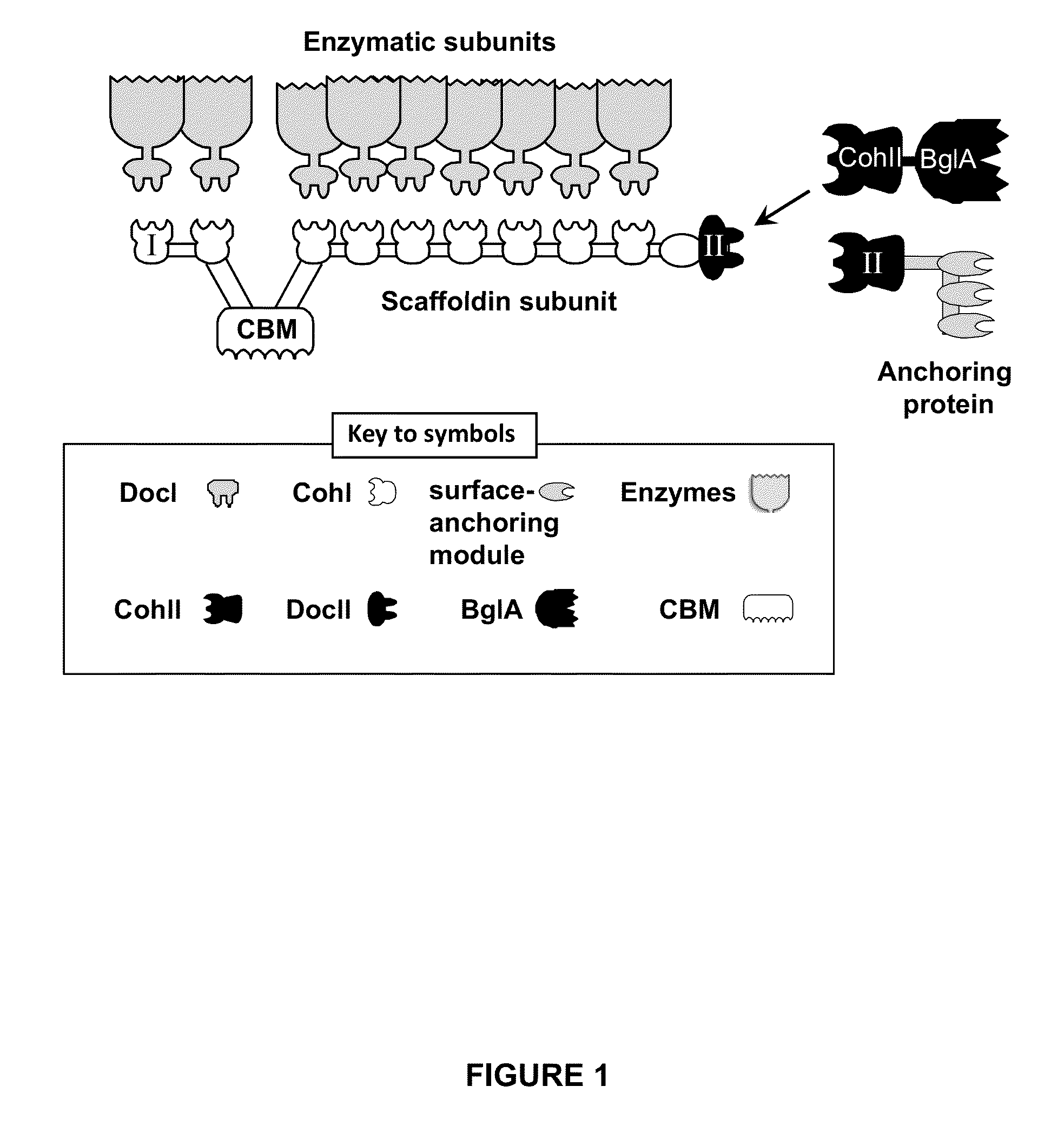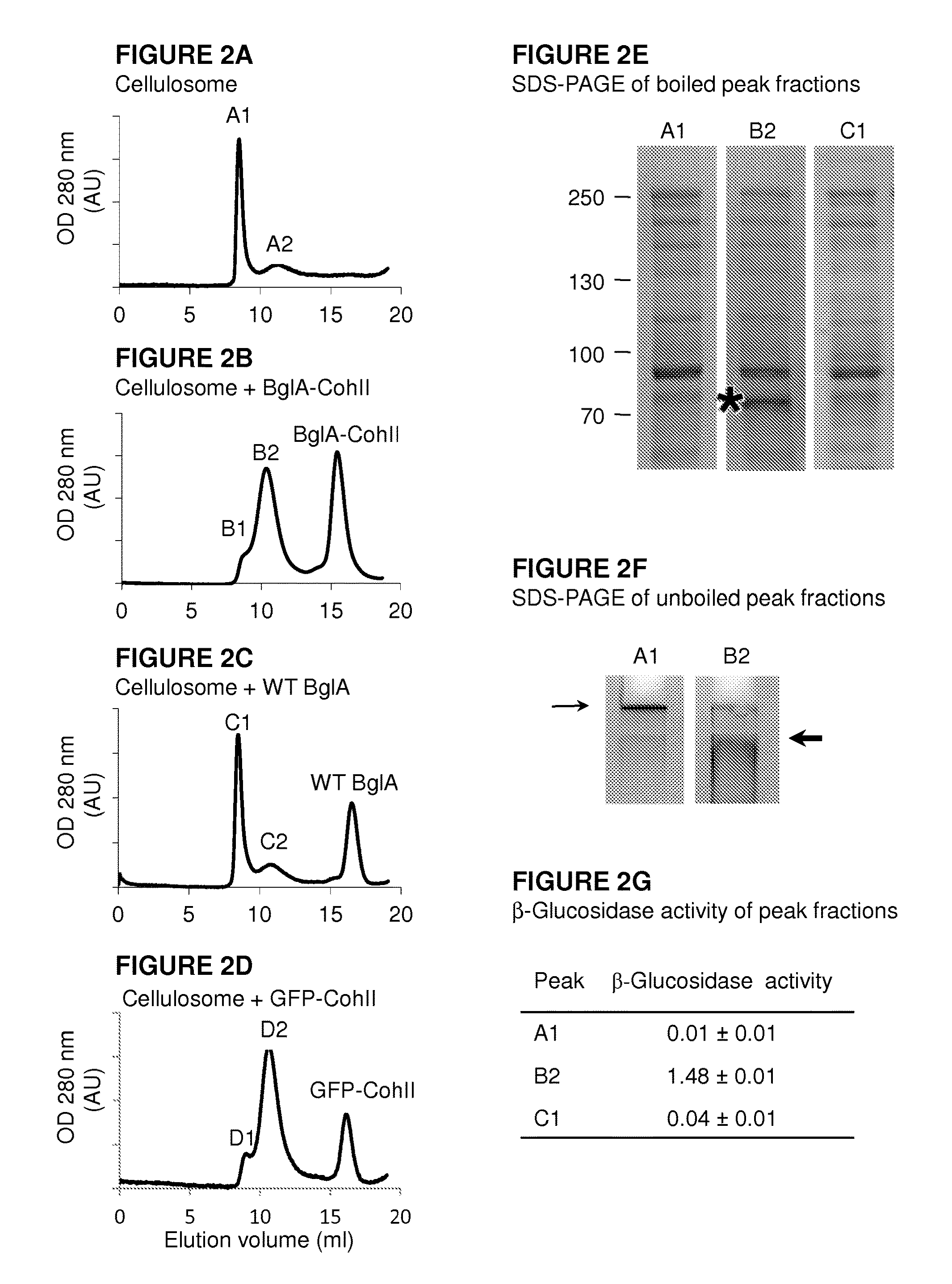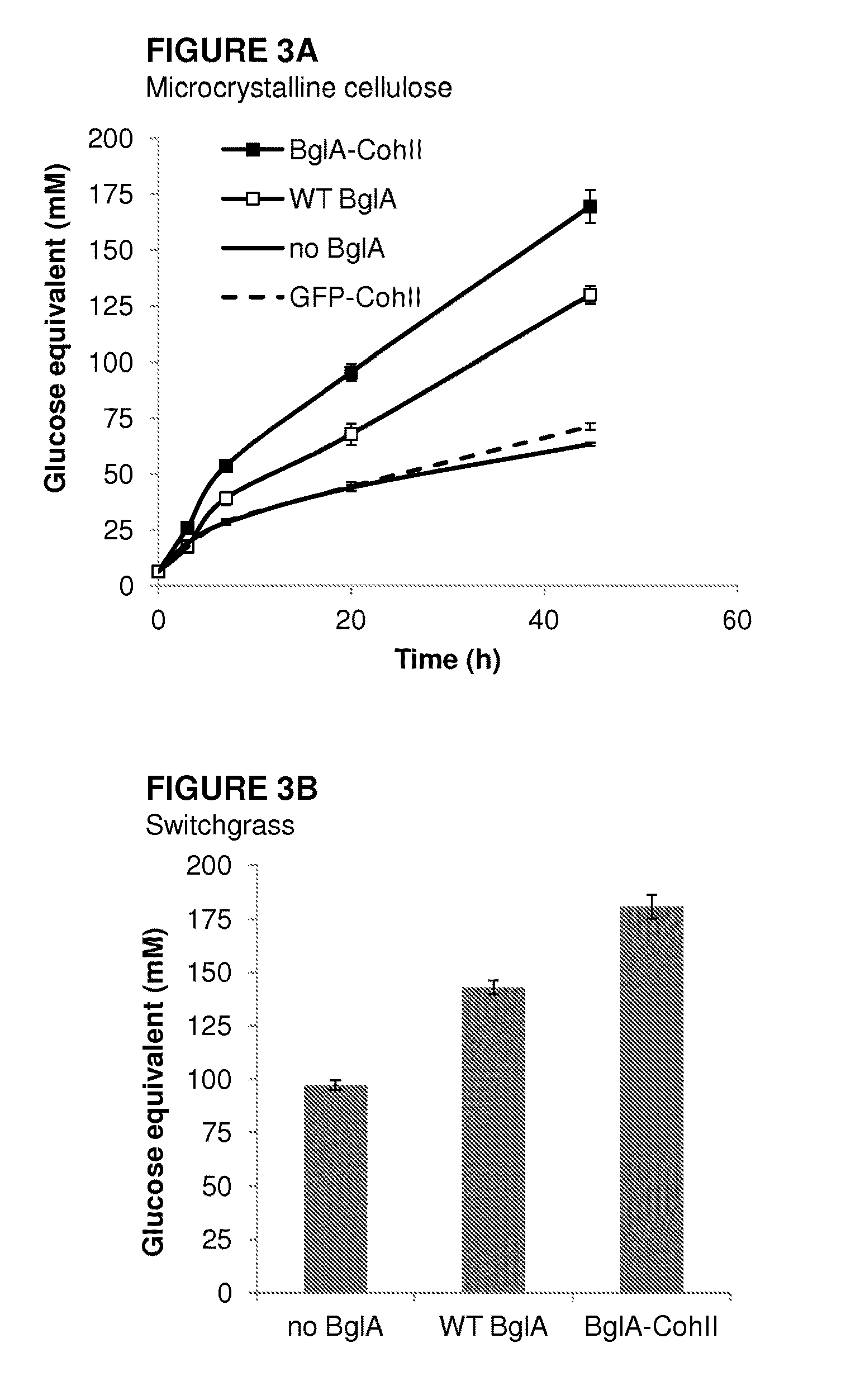Fusion proteins comprising type-II cohesin modules, multi-enzyme complexes comprising same and uses thereof
a type-ii cohesin and module technology, applied in the field of type-ii cohesin modules of fusion proteins, can solve the problems of time and resource consumption, affect the activity of enzymes, etc., and achieve the effects of improving cellulolytic activity, enhancing the high efficiency of natural cellulosomes, and improving the activity of cellulosomes
- Summary
- Abstract
- Description
- Claims
- Application Information
AI Technical Summary
Benefits of technology
Problems solved by technology
Method used
Image
Examples
example 1
Production and Characterization of BOA-CohII
[0233]A clone expressing the CohII-fused BglA produced a ˜72 kDa N-terminal (His)6-tagged polypeptide. Ni-NTA affinity purification of the soluble fraction resulted in a >90% pure enzyme, as detected by SDS-PAGE and β-glucosidase activity assay. The kinetic parameters (Km and kat), thermal stability and the optimal pH and temperature profiles of BglA-CohII were determined and compared to those of the wild-type BglA enzyme. The thermal stability assay revealed that BglA-CohII retains 80% of its initial activity after 3 h at 60° C. as compared to 91% retention of the activity shown by WT BglA, thus indicating a decrease of 13%. After 43 h at 60° C., the fusion protein retained 29% of its original activity under these conditions vs. 34% for the wild-type protein. The kat / Km ratio of BglA-CohII was about 9% lower than WT BglA (52.8 and 57.7 s−1mM−1, respectively). Optimal activity for both enzymes was observed at 60° C. and pH 6.5.
example 2
Incorporation of BglA-CohII into the Cellulosome Complex
[0234]A schematic view of the C. thermocellum cellulosome and the proposed attachment site of BglA-CohII is shown in FIG. 1.
[0235]In order to determine whether BglA-CohII can bind to the cellulosome, the cellulosome was allowed to interact with WT BglA, BglA-CohII and GFP-CohII (as a non-enzymatic CohII-bearing control protein) followed by size exclusion chromatography As can be seen in FIG. 2A, the majority of the native cellulosome emerged in the void volume of the column (peak A1), with a smaller peak (A2) that eluted later. When BglA-CohII was added to the cellulosome (FIG. 2B), the second peak (B2), presumably representing the cellulosome-complexed chimaeric β-glucosidase, was increased at the apparent expense of the void-volume peak, and a third peak appeared, representing excess free, uncomplexed BglA-CohII, consistent with its apparent molecular mass. In contrast, the addition of wild-type BglA (FIG. 2C) failed to affec...
example 3
Enhancement of Cellulolytic Activity by the Cellulosome-Bearing BgIA-CohII
[0238]Since BglA-CohII was found to bind specifically to the cellulosome complex in an enzymatically active form, it was thus of interest to determine whether the overall cellulolytic activity of the cellulosome would be enhanced accordingly. In this context, the combined cellulosome and BglA-CohII were examined for their ability to degrade microcrystalline cellulose or pre-treated switchgrass versus those of the various controls.
[0239]Thus, the cellulosome was combined with the cellulosic substrate, and the production of soluble reducing sugars was assessed. In parallel samples, the substrate-adsorbed cellulosome was combined with either BglA-CohII, WT BglA (added at equivalent specific activity) or GFP-CohII (at equivalent molar concentration to BglA-CohII).
[0240]As can be seen in FIG. 3, complexation of BglA-CohII to the cellulose-adsorbed cellulosome enhanced the hydrolysis of microcrystalline cellulose an...
PUM
| Property | Measurement | Unit |
|---|---|---|
| volume | aaaaa | aaaaa |
| pH | aaaaa | aaaaa |
| pH | aaaaa | aaaaa |
Abstract
Description
Claims
Application Information
 Login to View More
Login to View More - R&D
- Intellectual Property
- Life Sciences
- Materials
- Tech Scout
- Unparalleled Data Quality
- Higher Quality Content
- 60% Fewer Hallucinations
Browse by: Latest US Patents, China's latest patents, Technical Efficacy Thesaurus, Application Domain, Technology Topic, Popular Technical Reports.
© 2025 PatSnap. All rights reserved.Legal|Privacy policy|Modern Slavery Act Transparency Statement|Sitemap|About US| Contact US: help@patsnap.com



